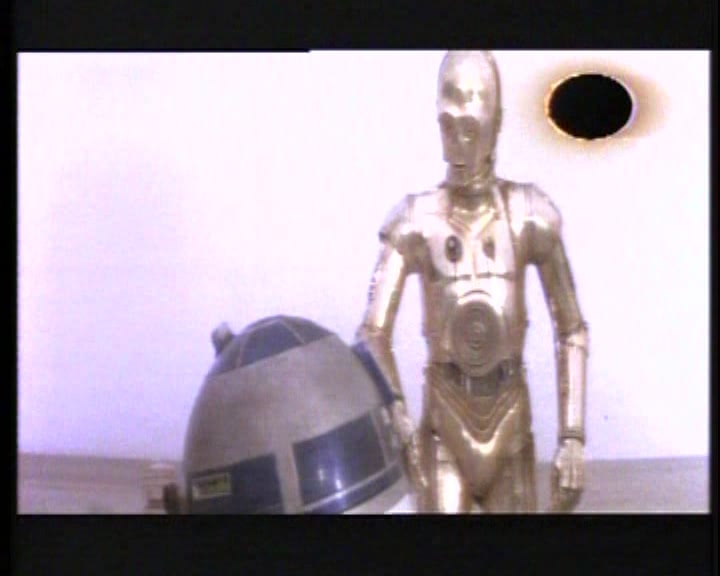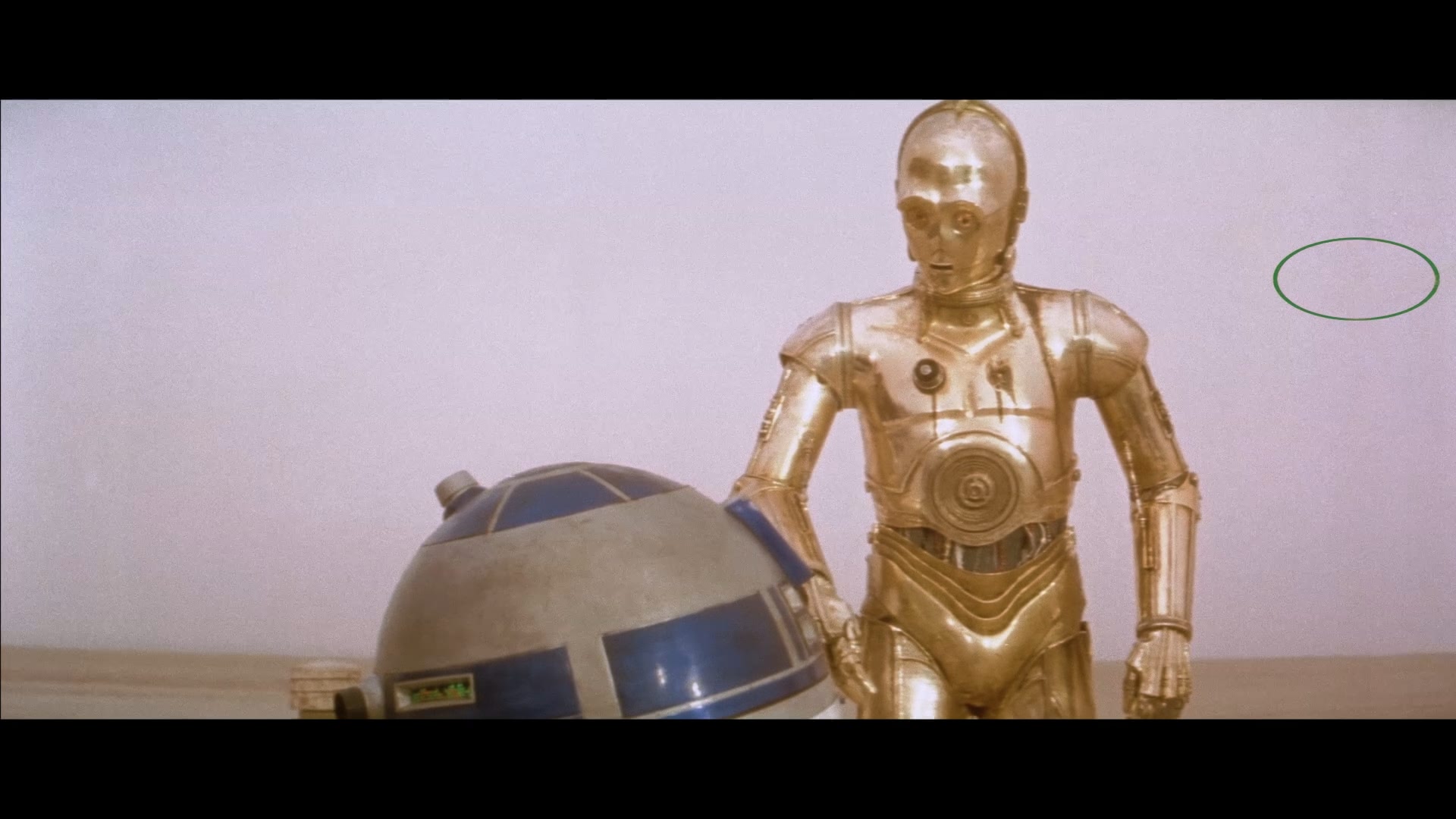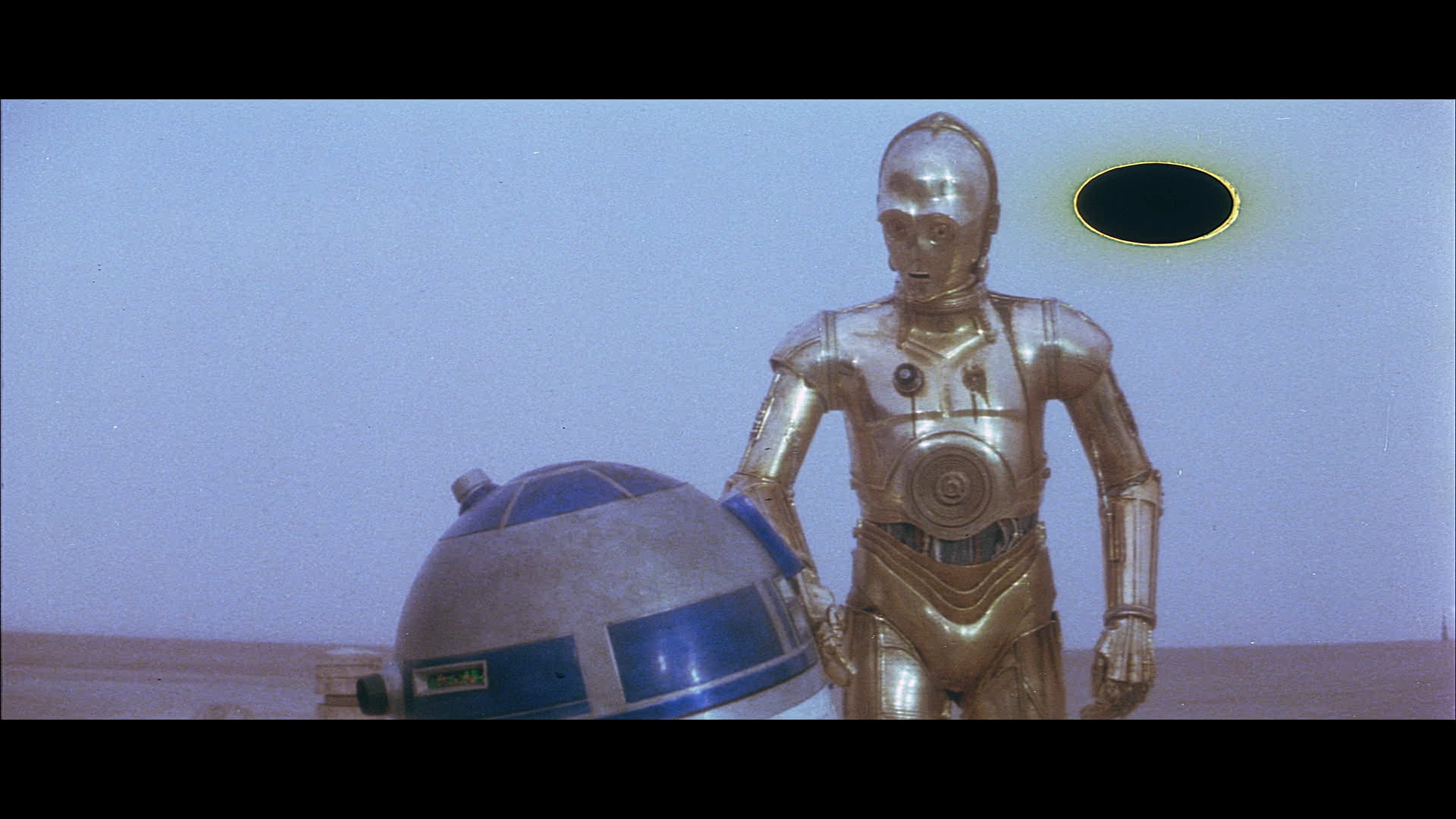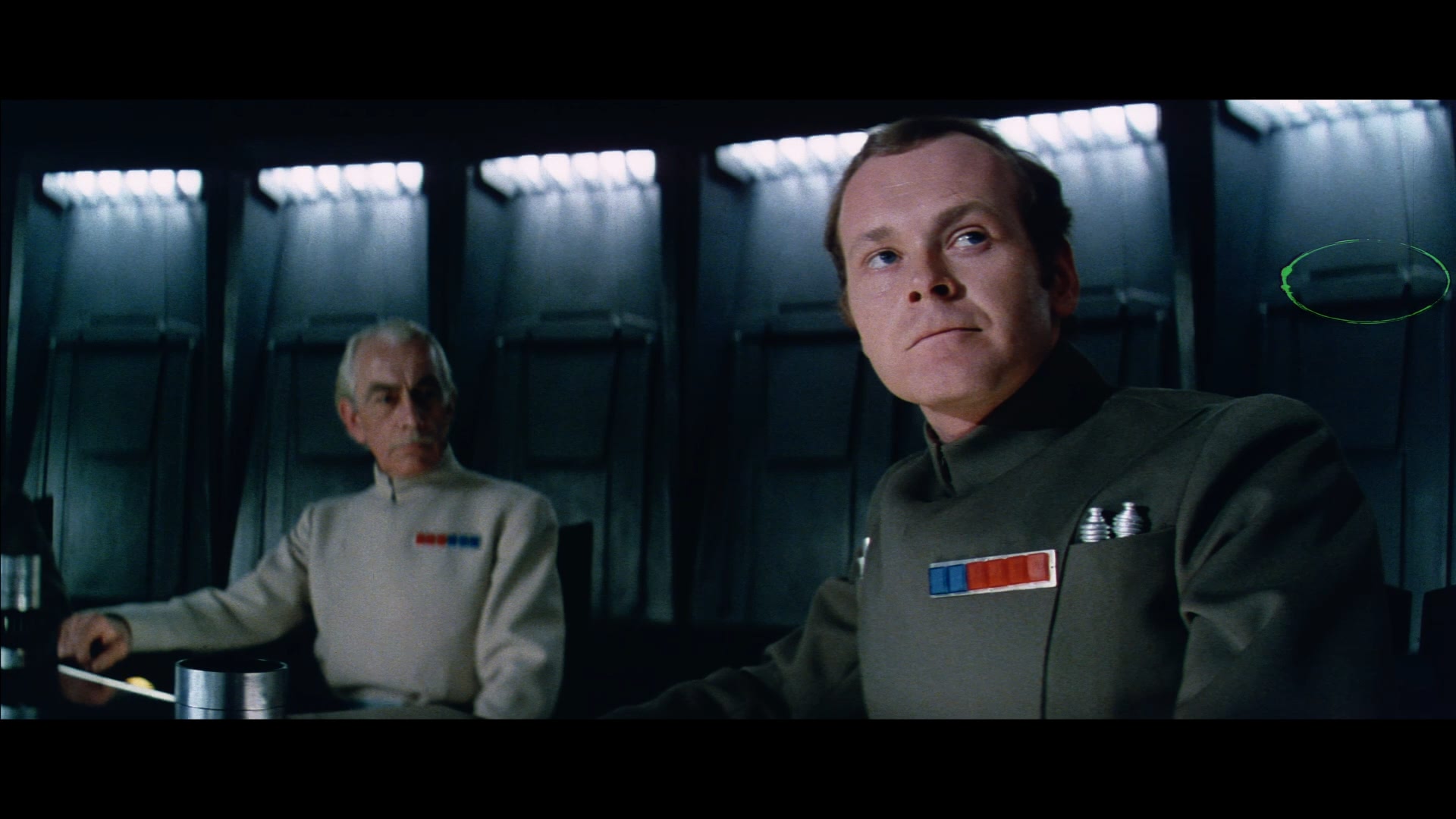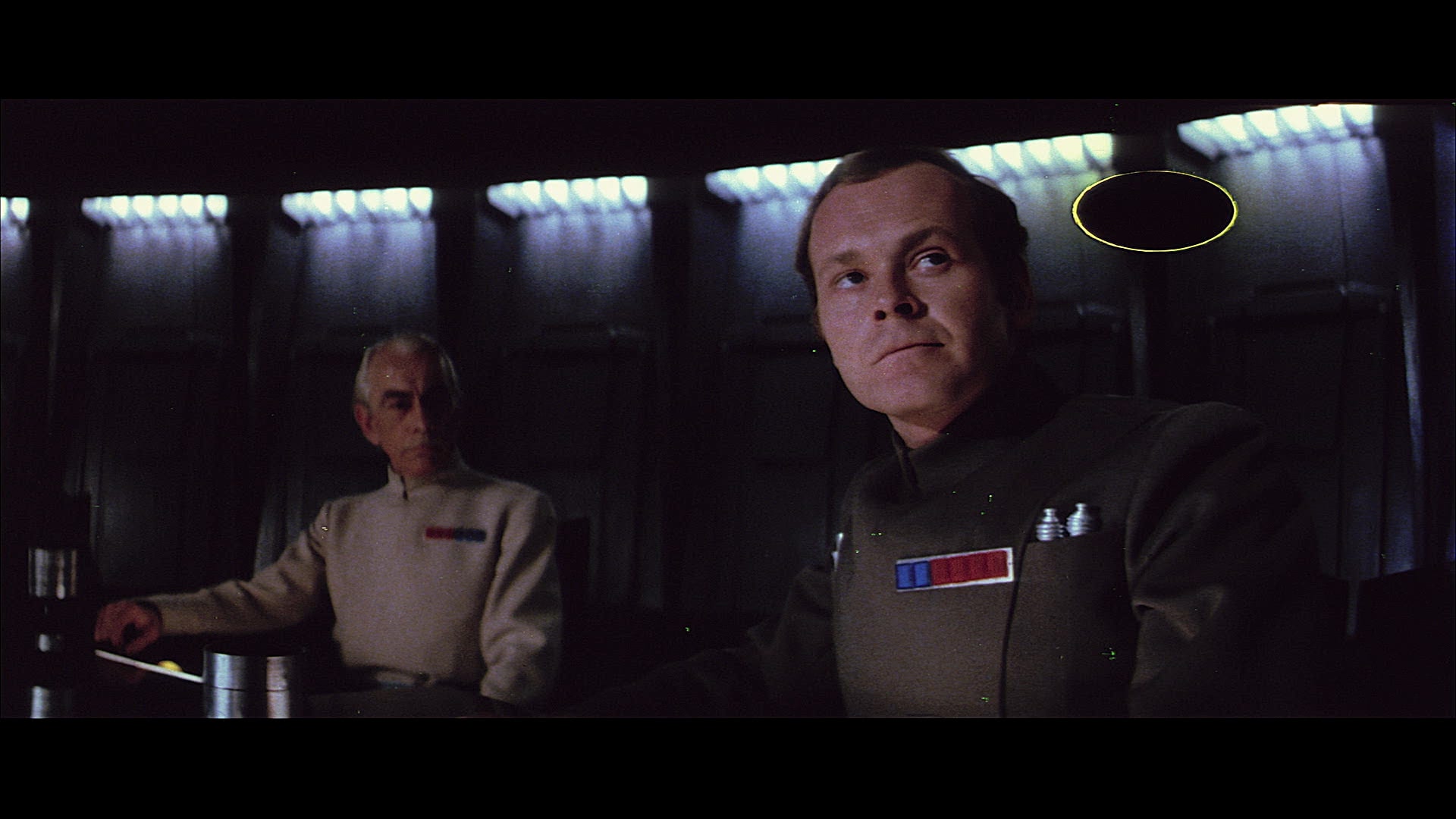My evidence is the large body of transfers being so consistent. No, I am not intimately familiar with the telecine process. Unless they had some guide they were distributing with the prints, it seem pretty impossible that 13 different telecines done all over the world would end up having the same shots that look different form the Technicolor prints. Add to that Puggo’s work and Team Negative One’s work. And that is just with the original movie. If you add in the SE, you have another set of transfers that are again different.
So you have a handful of shots across ~13 different telecines that look consistently different to the theatrical Tech prints. How does that indicate any cause and effect relationship to the Tech prints?
Also, Puggo and TN1 do not have proper equipment to grade the films correctly to the projected image, this was confirmed by Williarob in this thread. He said that TN1 used the GOUT as the colour reference.
And except for the English language 16 mm print that Puggo used and the Moth3r bootleg, all the versions (35 mm, Technicolor, pan and scan, and widescreen) have the identical end credits. However, the 3 FX shots (the Falcon being shot at by the Star Destroyer while leaving Tatooine, the composite arrival outside the Rebel Base, and the Rebel fighters streaking across the sky) are not found in any non-English print. The only explanation for what prints they are in is that the earlier version of the shots (in each case the flaw it pretty clear) were from the May 1977 release and the opening and closing credits were changed out to do the home video version. That means this cannot be a print struck from the negative for a telecine.
Why can’t it be from a print struck for telecine? For all we know all telecine prints could have been struck from a dupe-neg made in 1977, there’s no reason to assume they were struck from the same negative as the release prints. Was the o-neg a cut negative or a duplicate negative do you know? I was under the impression it was a cut negative - if that’s the case it would make sense not to use it for striking reduction prints and home video telecines, in which case a duplicate negative was most likely created for this purpose.
If they need a different print to do the Telecine then it would have to have been struck from the interprositve used in May 1977.
You don’t typically strike prints pos > pos (reversal prints) except in exceptional circumstances. And certainly not just for telecine prints.
These older telecines also have ciggarette burns at the reel changes.
No they don’t, they have changeover cue marks. But even so if you just look at them what do you notice?
I’ll tell you what you notice, you notice that all of the above examples with the exception of the Technicolor prints, have cue marks etched in to the negative, not into the final prints themselves. What this suggests, if anything, is that they may have reused a dupe neg (internegative) used for striking theatrical prints with cue marks etched in to it to strike the telecine prints from. But that may not be the case, it could still be the same negative used to make the Tech matrices, but the matrices were made before putting in cue marks (in other words, they struck the separation negatives for the matrices first and then put in the cue marks and made contact prints).
Also, we don’t know where they struck the b&w Tech separation negatives do we? I kind of doubt they would ship the valuable cut camera negative to the UK if they could strike the separation negatives for Tech printing in the US. And even if they couldn’t it wouldn’t stop them sending a dupe neg to the UK instead.
By the time the telecines were needed, the negative had been long changed.
But which negative? That only matters if the telecine masters were struck from the cut negative, if they were struck from a dupe neg it doesn’t matter if the o-neg was changed.
The first official telecine was in 1982. The negative had to have been changed before the end of 1977 for the international version and probably the wider release later in the summer. So the 3 FX shots archive just when the prints were taken from the O-neg. As you say, it is easy to change the credits.
You don’t alter the cut-negative for international releases, you make a duplicate negative and send it to its destination to be used to strike prints.
1982 may have been the first full transfer of the film to television (was it?) but there were certainly clips telecined in 1977 and probably as far back as 1976. Which means they had telecine master prints from the start for that purpose (probably 16mm telecine prints that could be cut up to use as clips in specials and promotional materials, as well as trailers and tv spots obviously).
I am not saying that the telecines are identical in all respects, but they follow so close in some ways that differ from the Technicolor prints that I can only conclude the technicolor prints are flawed. If the prints used for telecines are lower contrast than the release prints, then they would have even less color in those Tatooine scenes that look so washed out and it would be even more impossible to pull so much contrast and color out of what we see in the Technicolor prints.
Not at all, a low contrast print still has a wide dynamic range and the telecine operator can pull as much saturation as they want to make the colours “pop”. Also, it’s typical of telecines to push a much more saturated picture than is theatrically accurate. You only have to look at the 35mm transfer of “Song of the South” to see that.
No one at Technicolor in 1977 could imagine we would be sitting here analyzing their prints 40 years later.
I’m pretty sure they would have imagined it because it had become well known that all photochemical prints were fading, and Kodak was rushing for a solution. Even by 1977 many older films only had Tech prints as a reliable reference for the theatrical colours of older films.
They did one final movie and the prints have known flaws that because of the nature of the prints come down to us now just as they did them.
Star Wars might have been the last at the London lab, but the dye-transfer Suspiria prints were made a year or so later in Rome.
And it isn’t like we don’t have access to the raw scans of other prints to compare to. I have compared all the versions I have and only the Technicolor have those odd washed out Tatooine scenes and the green shadows. It seems like the color timing used to make the master wasn’t quite correct. And I realize that nearly every version I have access to has been tweaked and color corrected to look better, but the sheer volume of transfers and the consistency of what looks different from the Technicolor prints can only point to the Technicolor prints being flawed during the creation process.
Well no we don’t have any other scans. The only other scan we have is TN1’s scan of the Spanish LPP. But that’s a dupe-print quite likely from a dupe-neg. That’s not going to tell you anything. You’d need to get your hands on a faded Kodak US release print and transfer that. Also we don’t have an uncorrected Tech print scan either unless you have something I haven’t seen? 4K77 went through a shot-by-shot colour correction.
Plus TN1 shared a grindhouse version - uncorrected. This again matches to the Telecines, not to the Technicolor. Yes, there are differences in each different telecine, but as a body, along with the scans of the 35 mm and 16 mm optical prints, they show a consistency of what the film should look like that is at odds with the very exact scans of the technicolor prints that very faithfully show us what those prints look like.
It looks nothing like a telecine I just looked at…
This video was made in late 80’s/early 90’s, before HD came along, and it shows a Rank Cintel Mk III which can do either 35mm or 16mm film. From what I can find, machines of that caliber had always been able to do both 35mm and 16mm film, back into the 60’s.
?? The exact model isn’t important, a telecine transfers straight from a film source to a broadcast or home video format (480i60/567i50/720i50-60/720p23.976/1080i50-60/1080p23.976 etc). The important thing of note with Star Wars is that no release I know about was ever a from a standards conversion (which until 1989 the “best” way to achieve that involved using a film-out as a go between anyway lol more on that here). Put simply a lot of technology was devoted to transferring video to film and film to video, and not as much was devoted to video to video (although there were still things you could do video-to-video which was very important for broadcasters).
